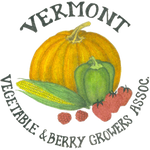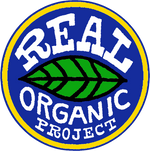By David Fried
Everyone is planting gardens. But who is planting fruit trees and nut trees?
While you have to plant a garden every spring, you only plant a fruit tree or a nut tree once, and it bears fruit for a long, long time.
Let your tree’s roots mine the moisture and nutrients it needs, while you have more time to play with your kids, to write a book or
hike a hill.
Real permaculture is seeing what you can do in your yard and on your hill to feed yourself and your family and using that wisdom throughout your life. Living with fruit and nut trees, they will teach you as you go. Don’t be hesitant. Start planting. Be fruitful. We will coach you along the way...
If you are walking next to me in late August and September, your shirt will be ruined. These hills are a place where plum trees grow and when they are ripe. The plums are so juicy that one bite sends their mango-like nectar spurting over whatever you are wearing, so watch out. Would you like to taste a golden plum? A red one? A purple one? We have them all. Let me tell you how they got here to
our northern Vermont farm.
In 1979 I was hiking the Long Trail north and lived on fruits and berries. When I came down from the mountains, I was offered a place to live and I started planting fruit trees. The local extension agent told me that I could only grow apples here, and only a few kinds.
But I was a rebel! I started fruit exploring. If I saw an unusual fruit at a f armer’s market, I would ask the grower what it was and where did he or she get it? In this way, I got some cuttings of plum trees and pear trees from them that had been growing in the same area as I was living, and had proven they could make it here.
I had to learn to propagate these cuttings by grafting. Then I had to be patient, as it can take five to seven years for a new baby tree (made of only two buds) to give its first fruit. Now, 35 years later, we have had many plantings of plum trees all over our hills and they continue to blossom and fruit and tantalize my taste buds. The plums you find in stores are large, hard and picked before they are ripe (so they keep well as they come across the country and sit in boxes).
The ones you and I can grow here were developed by skilled pioneers who
also lived in the north country. Professor S.E. Hansen in South Dakota, Professor Brian Smith in Wisconsin, and Professor Elwyn Meader in New Hampshire all introduced new plum varieties. They were natural crosses of
large, sweet but not-hardy-for-here, Japanese varieties, with super-hardy local plum species. The results are some of the most exotic yet easy-to-grow fruits we have.
They have names like” black ice,” “kahinta,” “lacrescent,” “cocheco ,” toka.” You are keeping the stories alive by planting, growing, eating, and sharing them.
One of the secrets we have rediscovered is that plum trees like to grow rather closely in “plum thickets.” Whether or not you plant them this way, they will seek to establish their own closely growing group by sending up “plum suckers” in
every which way. You can easily “steer” them by mowing or lopping.
My hypothesis is that within a tight group, their f lower buds have enough inner protection from cold and wind and some of their fruit has enough camouflage to elude the plum curculio beetle. It works, and we get thousands of plums without any sprays. We do sing to them. And give them ‘high-fives’ from time to time.
If you don’t have enough time or enough friends to eat them all fresh, you can freeze them whole to make jam or pies or sauce later. We like to dry them in a dehydrator, simply split with our fingers and laid out on the trays. They keep for a long time like this and taste more like dried apricots than prunes.
We have been growing plums successfully in northern Vermont and you can too. You can pick almost all of them from where you are standing on the ground. They often look like a Zen garden and when they are in blossom, all is right with the world. You may want to have a picnic table or a loveseat among your plum grove, f or you will be spending some good days out here. They give you an
outdoor place where you can feel right at home.
Anyone moving toward sustainability though permaculture can benef it a lot by planting fruit trees. They take time to get to harvest, so planting them should be done as early as possible. If you want to plant them this year, it is best to start planning now.
David Fried will be sharing his thoughts in this column to share tips and proven techniques that will help us all to get on that path to
Permaculture. He is the founder and grower of Elmore Roots Fruit Tree and Berry Nursery in Elmore, Vermont. Visit elmoreroots.com






